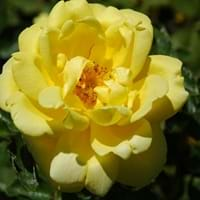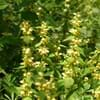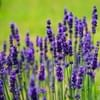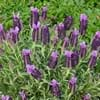Life Span
Perennial
Perennial
Origin
Eastern Europe, Russia, Siberia
Hybrid origin
Types
Not Available
Not Available
Habitat
Damp shady woods, Pastures
gardens, Pastures, Prairies, Terrestrial, Tropical regions
USDA Hardiness Zone
3-8
3-8
Sunset Zone
A2, A3, 1a, 1b, 2a, 2b, 3a, 3b, 4, 5, 6, 7, 8, 9, 10, 14, 15, 16, 17, 18, 19, 20, 21, 22, 23
1a, 1b, 2a, 2b, 3a, 3b, 4, 5, 6, 7, 8, 9, 10, 11, 12, 13, 14, 15, 16, 17, 18, 19, 20, 21, 22, 23, 24
Habit
Clump-Forming
Oval or Rounded
Flower Color
White, Purple, Blue Violet
Not Available
Flower Color Modifier
Bicolor
Not Available
Fruit Color
Not Available
Non Fruiting Plant
Leaf Color in Spring
Green, Dark Green
Not Available
Leaf Color in Summer
Green, Dark Green
Not Available
Leaf Color in Fall
Green, Dark Green
Not Available
Leaf Color in Winter
Light Green
Light Green
Leaf Shape
Linear
Pinnate
Plant Season
Summer
Summer, Fall
Sunlight
Full Sun, Partial Sun
Full Sun, Partial Sun
Type of Soil
Clay, Loam, Sand
Loam, Sand
The pH of Soil
Acidic, Neutral
Acidic, Neutral
Soil Drainage
Average
Well drained
Bloom Time
Early Summer, Summer
Early Summer, Summer, Late Summer, Early Fall
Tolerances
Drought
Drought
Where to Plant?
Ground
Ground, Pot
How to Plant?
Bulbs, Seedlings
Grafting, Stem Planting, Transplanting
Plant Maintenance
Medium
Medium
Watering Requirements
Keep ground moist
Form a Soil ring to water efficiently, Requires regular watering, Water twice a day in the initial period, Water when soil is dry
In Summer
Lots of watering
Lots of watering
In Spring
Moderate
Moderate
In Winter
Average Water
Average Water
Soil pH
Acidic, Neutral
Acidic, Neutral
Soil Type
Clay, Loam, Sand
Loam, Sand
Soil Drainage Capacity
Average
Well drained
Sun Exposure
Full Sun, Partial Sun
Full Sun, Partial Sun
Pruning
Remove damaged leaves, Remove dead branches, Remove dead leaves
Prune if you want to improve plant shape, Remove damaged leaves, Remove dead leaves, Remove deadheads, Shape and thin as needed
Fertilizers
All-Purpose Liquid Fertilizer
All-Purpose Liquid Fertilizer, organic fertlizers
Pests and Diseases
Red blotch
Aphids, Bacterial Diseases, Mites, Slugs
Plant Tolerance
Drought
Drought
Flower Petal Number
Single
Not Available
Edible Fruit
No
Not Available
Foliage Texture
Medium
Not Available
Foliage Sheen
Matte
Not Available
Attracts
pollinators
Not Available
Allergy
allergic reaction, Skin irritation
no allergic reactions
Aesthetic Uses
Bog Garden, Showy Purposes, Woodland margins
Beautification, Bouquets
Beauty Benefits
Not Available
Not Available
Environmental Uses
Air purification
Air purification
Medicinal Uses
Expectorant
No Medicinal Use
Part of Plant Used
Flowers, Root
Flowers
Other Uses
Used as an insecticide
Showy Purposes, Used as Ornamental plant
Used As Indoor Plant
No
No
Used As Outdoor Plant
Yes
Yes
Garden Design
Bog Garden, Cutflower, Feature Plant, Foundation, Mixed Border
Container, Cutflower, Feature Plant, Foundation, Mixed Border
Botanical Name
IRIS sibirica
ROSA 'Allgold'
Common Name
Siberian Iris
Floribunda Rose
In Hindi
Siberian Iris
रोजा allgold
In German
Sibirische Schwertlilie
rosa Allgold
In French
L'Iris de Sibérie
rosa TousPlaqué
In Spanish
Siberian Iris
rosa allgold
In Greek
Siberian Iris
rosa allgold
In Portuguese
Siberian Iris
rosa allgold
In Polish
Kosaciec syberyjski
rosa allgold
In Latin
Siberian Iris
Rosa allgold
Phylum
Tracheobionta
Not Available
Class
Liliopsida
Not Available
Family
Iridaceae
Rosaceae
Clade
Angiosperms, Monocots
Angiosperms, Eudicots, Rosids
Tribe
Irideae
Not Available
Subfamily
Iridoideae
Rosoideae
Number of Species
Not Available
Season and Care of Siberian Iris and Floribunda Rose
Season and care of Siberian Iris and Floribunda Rose is important to know. While considering everything about Siberian Iris and Floribunda Rose Care, growing season is an essential factor. Siberian Iris season is Summer and Floribunda Rose season is Summer. The type of soil for Siberian Iris is Clay, Loam, Sand and for Floribunda Rose is Loam, Sand while the PH of soil for Siberian Iris is Acidic, Neutral and for Floribunda Rose is Acidic, Neutral.
Siberian Iris and Floribunda Rose Physical Information
Siberian Iris and Floribunda Rose physical information is very important for comparison. Siberian Iris height is 50.80 cm and width 61.00 cm whereas Floribunda Rose height is 60.00 cm and width 90.00 cm. The color specification of Siberian Iris and Floribunda Rose are as follows:
Siberian Iris flower color: White, Purple and Blue Violet
Siberian Iris leaf color: Green and Dark Green
Floribunda Rose flower color: Not Available
- Floribunda Rose leaf color: Not Available
Care of Siberian Iris and Floribunda Rose
Care of Siberian Iris and Floribunda Rose include pruning, fertilizers, watering etc. Siberian Iris pruning is done Remove damaged leaves, Remove dead branches and Remove dead leaves and Floribunda Rose pruning is done Prune if you want to improve plant shape, Remove damaged leaves, Remove dead leaves, Remove deadheads and Shape and thin as needed. In summer Siberian Iris needs Lots of watering and in winter, it needs Average Water. Whereas, in summer Floribunda Rose needs Lots of watering and in winter, it needs Average Water.





